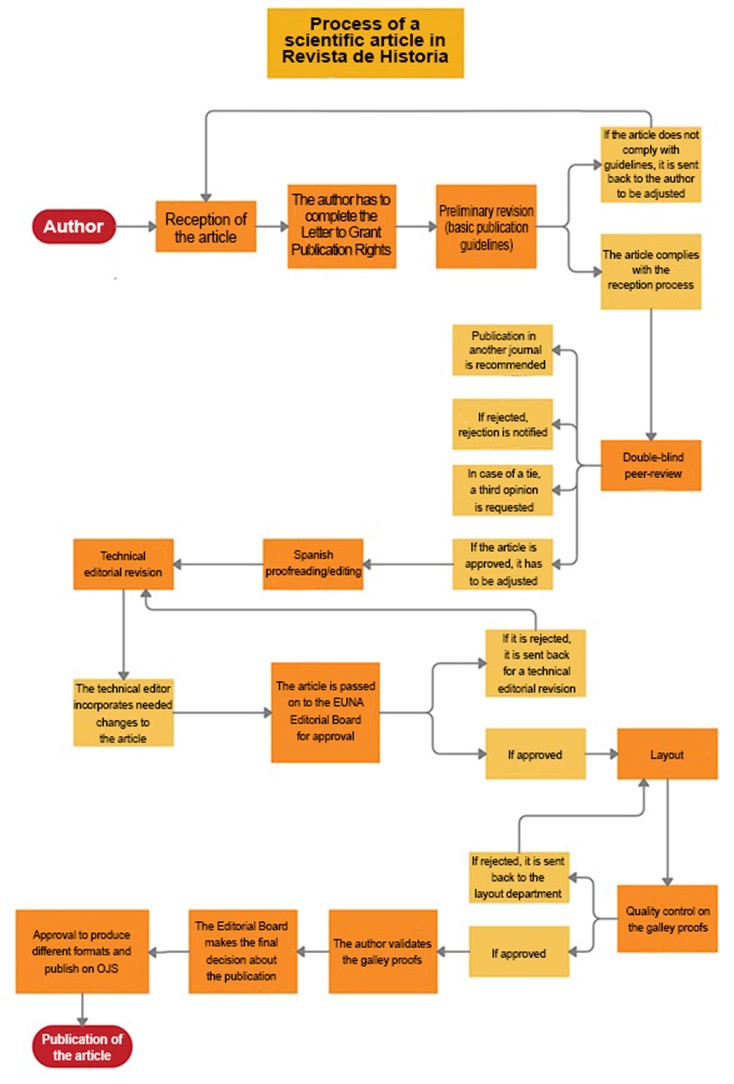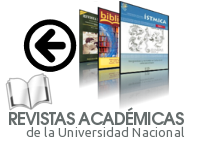Arbitration system (Peer Review)
Editorial Process and Arbitration System (Peer Review)
Synopsis
A double-blind peer mode does articles' peer review; two external reviewers or anonymous experts appointed by the Editorial Board are in charge of this task; they belong to institutions other than those of the authors. If not reaching an agreement between the assigned reviewers, a third specialist is assigned to untie the evaluation.
The following are the possible results:
- Approved without modifications.
- Approved once the suggested form and/or content changes have been incorporated.
- The publication is not recommended.
- Submission to another journal is recommended to the article’s author.
The Editorial Board of the Journal will notify the authors of the results. If an article is accepted with modifications to be incorporated, 15 days will be given from the date of notification to deliver the final version. Likewise, the Editor will make the appropriate form and style adjustments to the original text when needed. The Editorial Board will make the final decision on the publication. It will promptly inform the interested author of its resolution.
Stages of the Editorial Process
- Approximate time between receipt and publication: Five (5) months.
Receipt:
- All articles submitted to Revista de Historia must be original and unpublished. The articles must not have been simultaneously submitted to other journals or editorial bodies.
- Before submitting the articles, the authors must read and comply with the stipulated style and citation standards. The citation and bibliographic reference system must be based on the Chicago style format stipulated by this Journal. For this, please refer to Guidelines for authors.
- Once a manuscript has been submitted through the e-mail revistadehistoria@una.ac.cr, the Editorial Board receives it for a preliminary review to evaluate if it is current and to assess its relevance and originality, the theoretical accuracy, and the use of sources of information.
- The Editor will verify that the paper does not contain self-plagiarized or plagiarized material (either partially or totally). Likewise, the Editor will carry out a preliminary review of the citation system, copyrights of the sources used, and style of the paper to determine if it complies with the nine basic Guidelines for authors. Subsequently, the Editor will return the manuscript to the Editorial Board with the observations deemed opportune.
- If a manuscript complies with the basic guidelines, the Director will proceed to distribute it to the Editorial Board members to preselect and determine the transfer of the paper to the corresponding arbitration process.
- Likewise, the authors must complete the Letter to Grant Publication Rights.
Arbitration: [Maximum 35 Days]
- The Director and the Editorial Board consult and select the appropriate reviewers to review the manuscripts. They are experts or scholars related to the articles’ topics; their institutional affiliation is external to the publishing entity, and their opinion is given under the authors’ anonymity.
- After a maximum period of 22 calendar days, the reviewers evaluate the papers and deliver an Article Review Form and the manuscripts with observations if needed. They send back the form with details regarding recommendations, criticisms, notes, and any other pertinent comment.
- In case a reviewer is late with his/her review report, a reminder will be sent to the reviewer via e-mail; if the delay persists without a reviewer's response, his/her collaboration will be appreciated, and he/she will be replaced.
- The opinion contained in an Article Review Form will help make a decision and propose recommendations according to the following verdicts: a) the article is accepted without modifications; b) the article is accepted with modifications; c) the paper is rejected; e) publication in another journal is recommended.
Incorporation of Observations: [15 Days]
- The authors receive the verdict. If the article is accepted with modifications, 15 calendar days will be granted to incorporate the observations. It is worth remembering that for the Article Review Form’s delivery, the anonymity of the reviewers will also be respected.
- The authors must comply with the period granted for the integration of modifications since the swiftness of the editorial process will depend, to a large extent, on the punctuality of the parties involved.
- The authors will send the final draft of their articles to the Journal's e-mail address.
Verification of Guidelines: [15 Days]
- The Editor will verify compliance with the standards of style and citation of the final manuscripts.
- The Editor will make the necessary adjustments to comply with the criteria and requirements of the indexes, directories, catalogs, and storage and information systems to which the Journal is subscribed.
- The Editorial Board will make the final decision on the publication.
Proofreading, Editing, and Layout: [35 Days]
- The Editor will send the final manuscripts to the Publications and Printing Program of the Universidad Nacional for the corresponding proofreading and editing.
- The Publications Program sends the articles with observations to the Editor, who will incorporate corrections.
- The Editorial Board of the Universidad Nacional Press (EUNA) approves the volume.
- Once the volume is approved, the Editor sends it to the Publications Program for layout.
- The Publications Program sends the proofread text to the Editor for the incorporation of the necessary adjustments.
- The Editor will send the authors the galley proofs in PDF format with the adjustments made in the previous phases for a final review. For this, five (5) calendar days will be provided.
Publication: [8 Days]
- Once all the previous stages are completed, the articles will be ready to be published. The Editor will upload the articles on the Journal’s website.
- Finally, the authors will be informed about the final publication of their articles.












_2.23_.09_p_._m_._.png)
_2.35_.17_p_._m_._.png)

